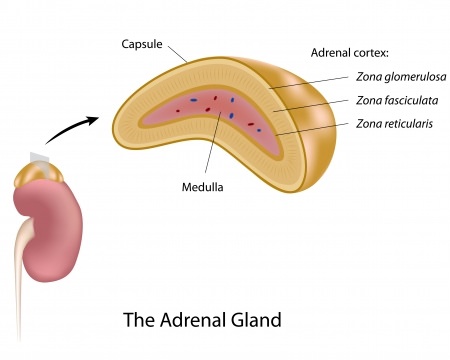

The adrenals are also called the suprarenal glands, "supra-" in Latin meaning "on top. It refers to the perch of this gland atop the kidney. The name "adrenal" comes from the Latin "ad-", toward + "rebes", kidney. Norepinephrine secreted by the adrenal gland acts to narrow blood vessels and raise blood pressure. Epinephrine is secreted in response to low blood levels of glucose as well as exercise and stress it causes the breakdown of the storage product glycogen to the sugar glucose in the liver, facilitates the release of fatty acids from adipose ( fat) tissue, causes dilation (widening) of the small arteries within muscle and increases the output of the heart. The adrenal medulla makes epinephrine ( adrenaline) and norepinephrine (noradrenaline). The adrenal cortex secretes steroid ( cortisone-related) hormones and the mineralocortoids that regulate the levels of minerals such as sodium and potassium in the blood. This tumor usually occurs when you are in your 30s, 40s, or 50s. It causes the gland to make too much of the hormones epinephrine and norepinephrine. The adrenal glands produce hormones that help control the heart rate, blood pressure, the way the body uses food, and other vital functions. The adrenal glands are endocrine glands that secrete important hormones in the human body. A pheochromocytoma is a tumor in the adrenal gland. The adrenal is made up of an outer wall (the cortex) and an inner portion (the medulla). Gland, adrenal: One of a pair of small glands, each of which sits on top of one of the kidneys.


 0 kommentar(er)
0 kommentar(er)
